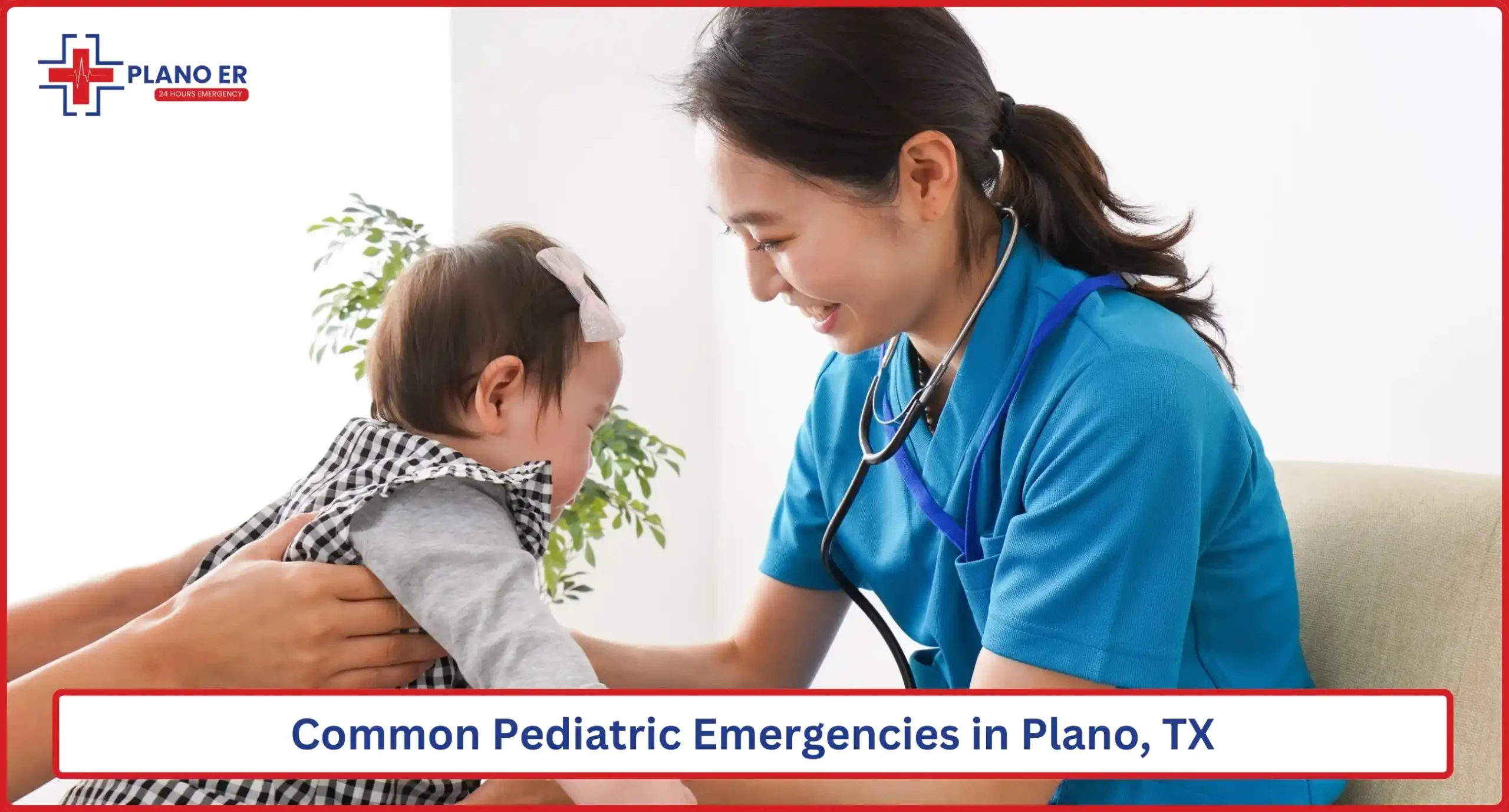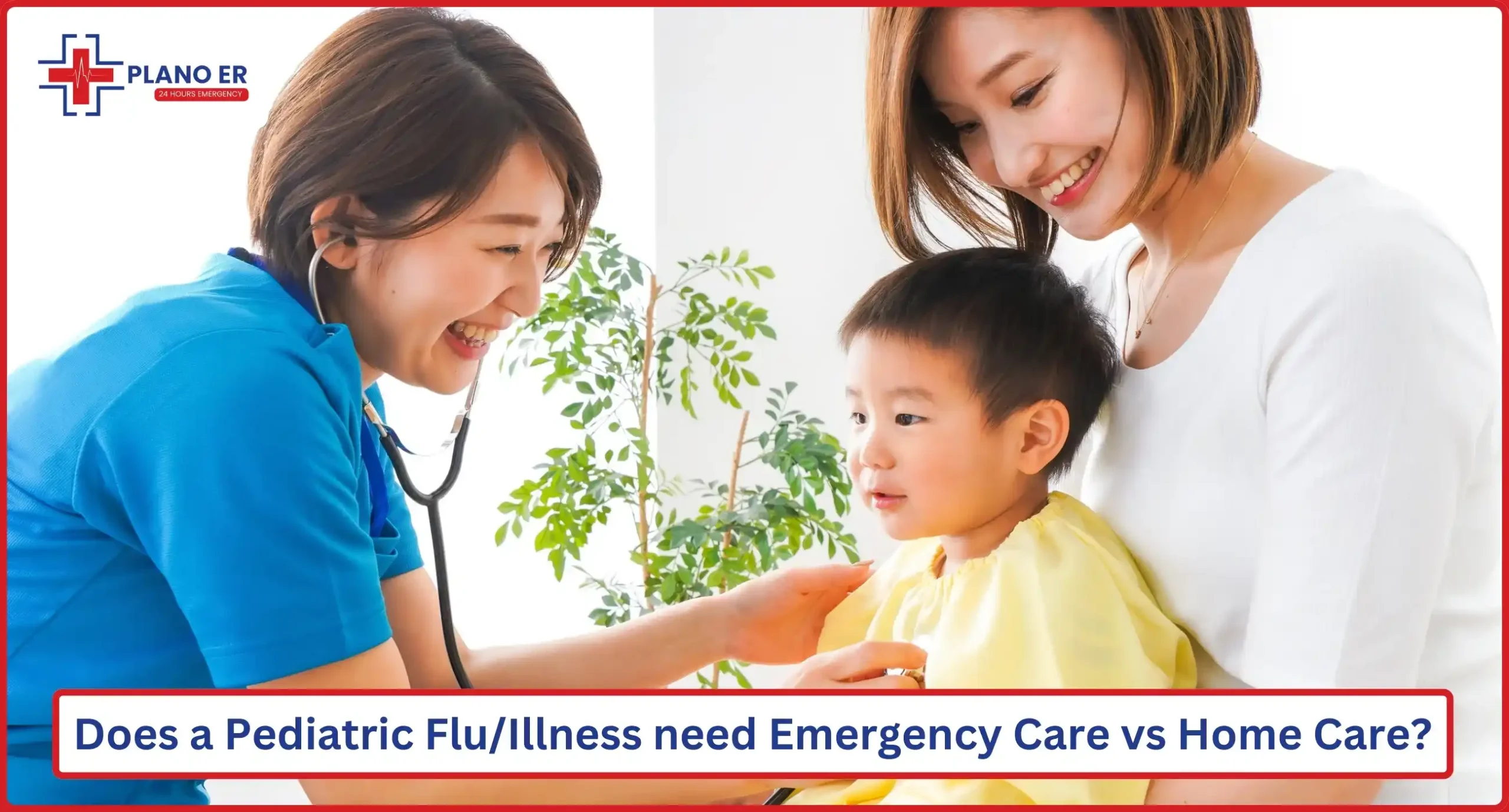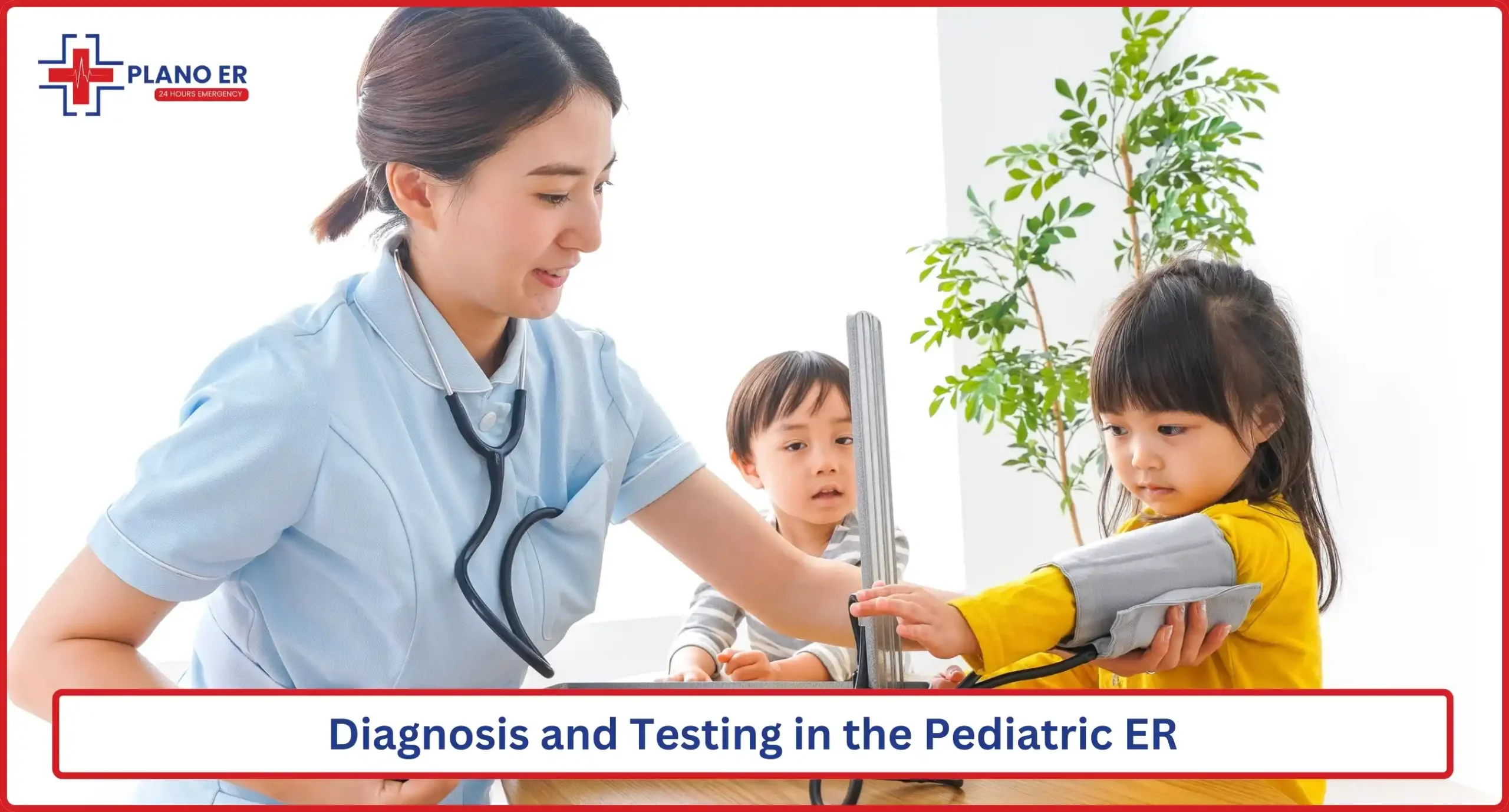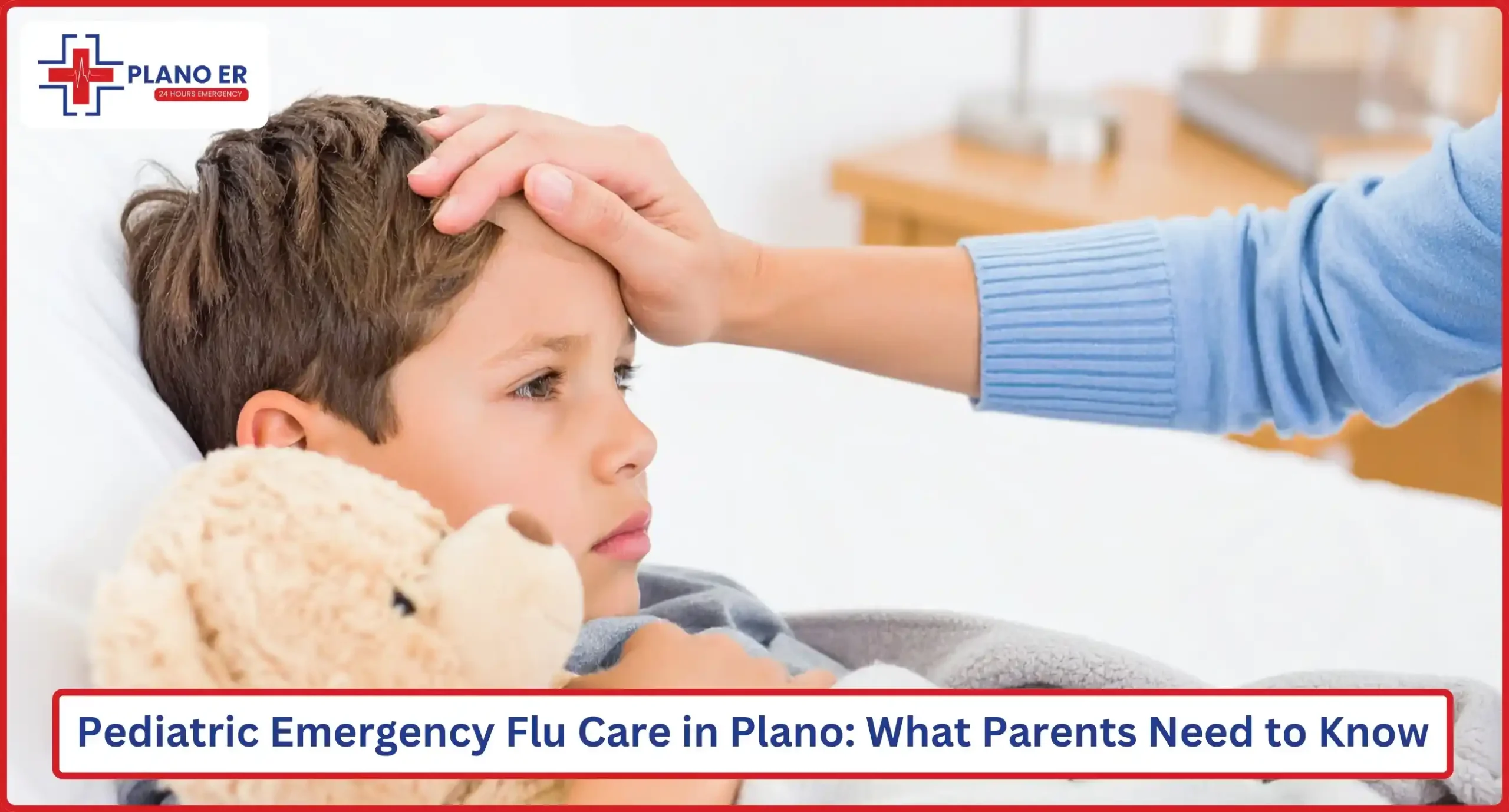The viral flu can affect children suddenly and more severely than adults, especially during peak season. As young immune systems are still developing, symptoms like high fever, cough, dehydration, or breathing problems appear more severely.
Understanding how the flu spreads and when to visit an emergency room for medical assistance is important for speedy recovery.
In Plano, TX, easy access to pediatric emergency care ensures that children are tested and treated timely manner.
Pediatric flu care is important to keep your child safe from serious complications, and knowing the signs at an early stage. Learn when to seek pediatric emergency care from Plano ER for timely treatment and faster recovery.
Common Pediatric Emergencies in Plano, TX

Children can experience sudden medical emergencies, including high fever, dehydration, infection, respiratory distress, and fractures. These conditions might require immediate medical evaluation and care at a pediatric emergency room in Plano, TX.
High Fever in Children
Children might experience a sudden temperature due to a change in the environment or an underlying infection, which requires immediate medical attention.
Difficulty Breathing or Asthma Attack in Children
Acute respiratory distress in children can be life-threatening, requiring immediate oxygen or medications.
Bacterial or Viral Infection in Children
Children are sensitive and can easily become exposed to viral or bacterial infections.
Lacerations and Burns
Wounds and burns require immediate medical attention and monitoring to prevent infection and spread.
Fractures and Sprains
Fractures and sprains require emergency digital X-ray and stabilization.
Pediatric Flu Care and Fever Management
Flu in children can spread quickly and make them sick or weak. Parents in Plano, TX, should not ignore if their children experience high fever, cough, body aches, sore throat, vomiting, and fatigue.
Children with breathing difficulty, dehydration, or persistent high fever require immediate medical attention and evaluation. By diagnosing the problem at an early stage, you can prevent from more serious situation.
A few tips to manage Pediatric Flu and Fever in Plano, TX:
Monitor early signs
- Hydration and proper diet
- Fever management
- Rest and comfort
- Seek Emergency Care if Necessary
- Regular Pediatric Check-Ups
Parents searching for child fever treatment emergencies, pediatric urgent care Plano, or children’s ER services in Plano can visit our 24/7 pediatric emergency room without booking an appointment.
When does a pediatric flu or illness need emergency care vs home care?

| Sign or condition | Emergency Care | Home Care |
| High fever above 104°F | Immediate ER visit | Follow the doctor’s prescribed suggestions |
| Mild fever below 102°F | Not required | Monitor and give fluids |
| Difficulty breathing or wheezing | Immediate ER visit | – |
| Signs of dehydration | ER visit for emergency IV fluids | Take rest at home once checked |
| Persistent vomiting or diarrhea | ER visit if the condition is severe | – |
Understanding Pediatric Flu: Causes and Risks
Influenza, or flu, is a viral infection that affects the respiratory system in children and has a negative impact on their immune system. The flu spreads through droplets when an infected person coughs, sneezes, or talks.
Children under five years of age, especially infants, are at a higher risk of flu. Moreover, children who suffer from chronic health problems such as asthma, diabetes, heart disease, or immune system disorders may experience worse infection signs.
Understanding the problem at an early stage helps parents reduce the chances of serious complications.
Causes
- Flu, whether bacterial or viral, affects the respiratory system
- Passes through coughs, sneezes, or talking
- Close contact with infected people
- Contact with the affected area
Risks
- Under five years
- Weak immune system
- Dehydration, pneumonia, or complications
- Chronic conditions like asthma or heart disease
Diagnosis and Testing in the Pediatric ER

When children show flu symptoms or breathing problems, pediatric emergency rooms take comprehensive emergency lab tests to identify the cause. Vital signs, including temperature, heart rate, and respiratory rate, help doctors know the root cause easily.
At Plano ER, we conduct emergency flu testing, which demonstrates whether it’s influenza or any other viral infection. We also offer ultrasound, cardiac enzyme test, and EKG services to determine how well the internal organs are functioning.
Conclusion: Early Action Protects Your Child’s Health
Pediatric flu can spread quickly, especially in young children and infants. Identifying the signs at an early stage can help in knowing when to take the right emergency care treatment.
Immediate care helps in reducing risk complications and recovering faster. When you’re confused, it is important to seek immediate medical evaluation.
Whether you’re looking for pediatric urgent care in Plano, child fever treatment emergency, or pediatric flu care in Plano, our ER is fully equipped with advanced equipment to identify the root cause instantly and refer the right assistance.
If you’re child’s flu symptoms are getting worse and nothing is helping them feel better, then immediately seek pediatric emergency care in Plano ER. Simply walk in to contact us for expert medical assistance.
Frequently Asked Questions (FAQs)
How do I know if my child’s flu is serious enough for emergency care?
If your child has a high fever (especially above 104°F), is facing severe body pain, a breathing problem, or unusual sleeping issues, then immediately seek pediatric emergency care.
Can my child with asthma have more severe flu symptoms?
Yes. Children with asthma are at higher risk of respiratory distress from flu.
What testing is done in the ER for suspected flu?
Most commonly, a rapid flu test is done, vital signs are checked, and diagnostic imaging or oxygen monitoring is performed if breathing issues are present.
How can I reduce my child’s risk of getting the flu?
Flu vaccination, hand and oral hygiene, avoiding sick contacts, and prompt care when symptoms appear.
When can flu be treated at home instead of the ER?
Mild symptoms like low-grade fever, stuffy nose, or mild cough can be treated at home.





